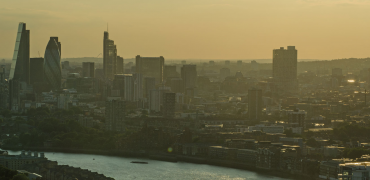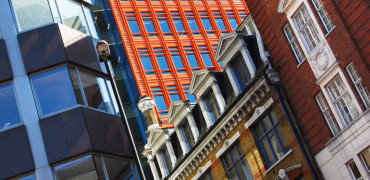Developers could soon be required to achieve an agreed standard of indoor air quality (IAQ) in order to gain planning permission for new buildings.
The Mayor of London is being urged to include IAQ levels in his revised London Plan for buildings over a certain size following intensive lobbying from the Clean Air in London campaign.
Campaign founder Simon Birkett has also called for more measures to turn buildings into “safe havens” in the face of rising outdoor pollution. He said that addressing IAQ was the “single thing that we can do quickest and cheapest”. Clean Air in London says more than 1,000 deaths in the capital so far this year are attributable to exposure to dirty air.
The Building Engineering Services Association (BESA) has given its backing to the planning proposal. This was a key point of discussion during an IAQ event that the Association hosted on National Clean Air Day on 15 June, at which Mr Birkett was one of the speakers. The association is working on the development of a new IAQ standard involving representatives from across the building services sector.
“The beauty of focusing on IAQ is that it can make an immediate difference,” said BESA chief executive Paul McLaughlin. “While the lengthy debates and legal challenges over how to address outdoor air pollution rumble on, our industry can make an instant impact by putting measures in place that protect the health of building occupants.”
AECOM’s director of sustainability Ant Wilson MBE told the meeting that work on an IAQ standard was an opportunity to create guidance that could eventually become a legal requirement.
Game changer
Mayor Sadiq Khan has made tackling pollution a key priority of his term in office and is likely to be supportive of the planning proposal, which would be a “game changer”, according to Mr Birkett. “Many roads in London have the highest concentrations of NO2 in the world,” he said. “A myopic focus on energy efficiency and CO2 has led to the problems we have now.”
Mr Birkett, who has also called for a new national Clean Air Act that includes IAQ measures, pointed out that the Building Regulations already contain requirements for maintaining NO2 at a safe level that should be enforced. The proliferation of individual, portable air monitors on smart phones also means that people were starting to challenge their employers over air quality in workplaces, he added.
“People spend about 90% of their time indoors and the cost of filtration is about 10% of the cost of actually getting air into the building,” said Mr Birkett. “The cost of filters is tiny compared to salaries and the impact of poor air quality on people’s health and productivity.”
Birkett urged building occupants to challenge their building managers to ensure mechanical ventilation systems were properly installed and maintained. He also cited British and European standard BS:EN 13779 (2012), which specifies the necessary filter performance for good indoor air quality.
Ken Sharpe is editor of Modern Building Services.
If you have any questions about this article, you can contact us via email. Or if you would like to tweet us, please follow our MEUK_LES twitter page.
We upload new articles every week so remember to check back regularly.
You can also sign up for our monthly newsletter below.


